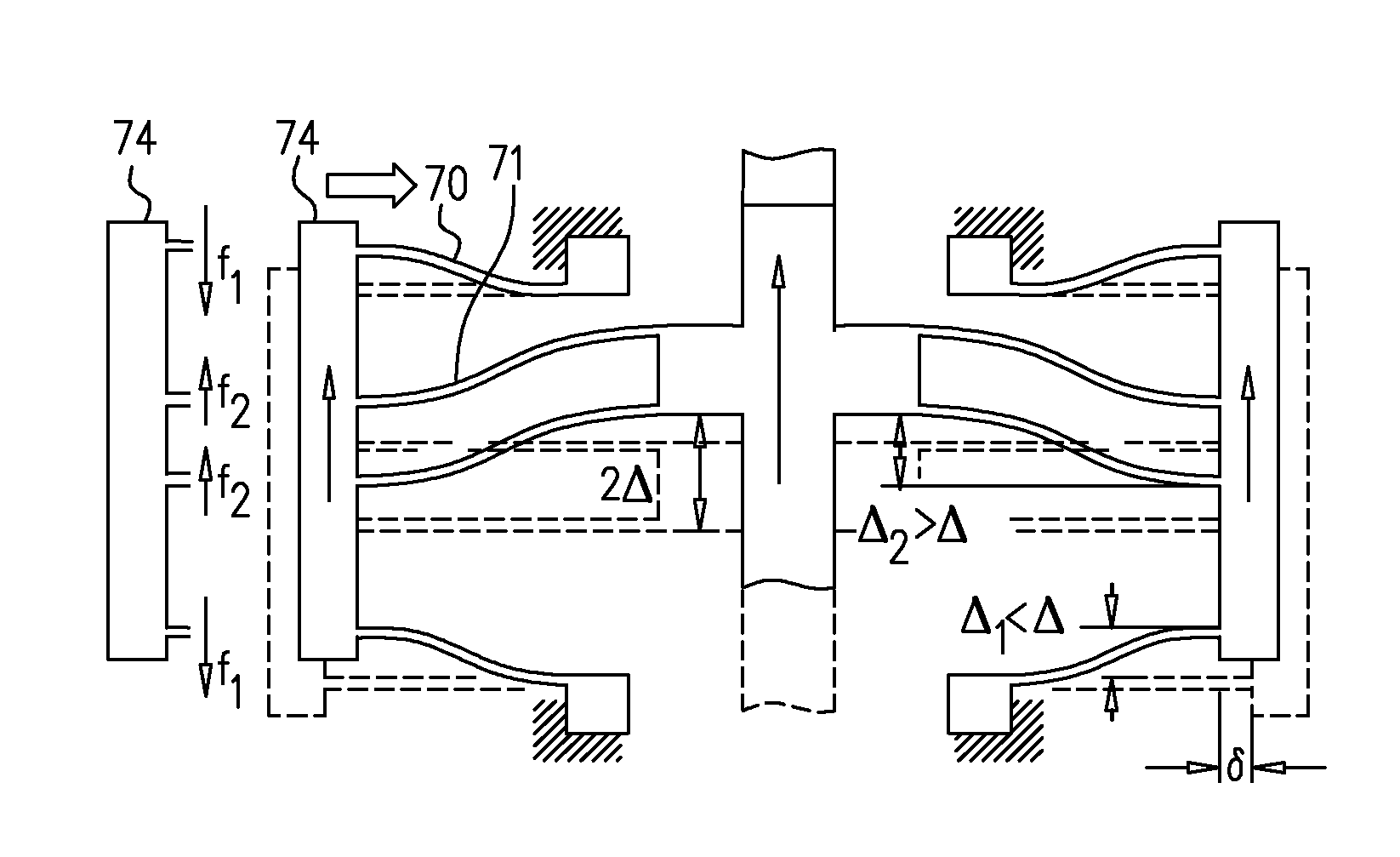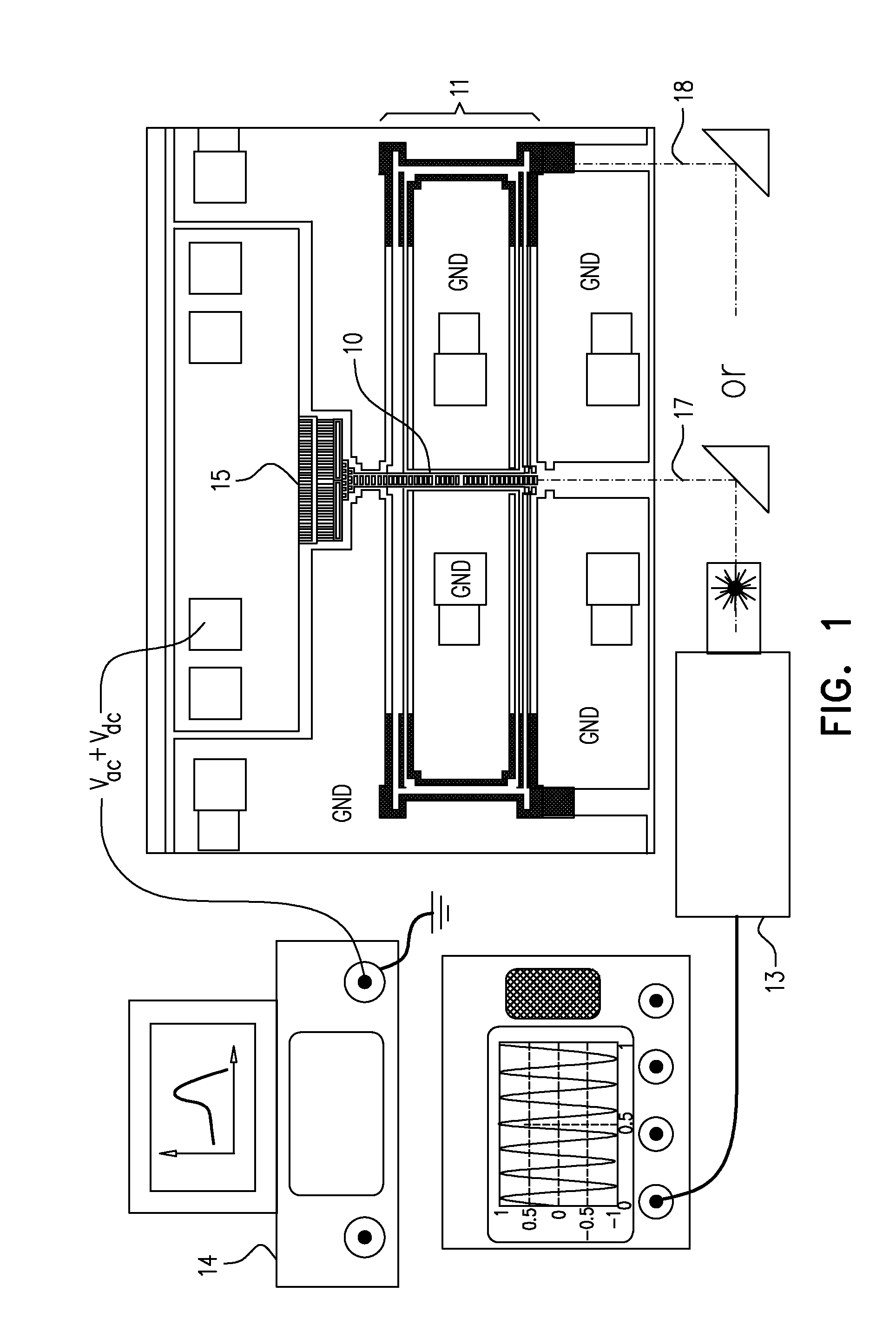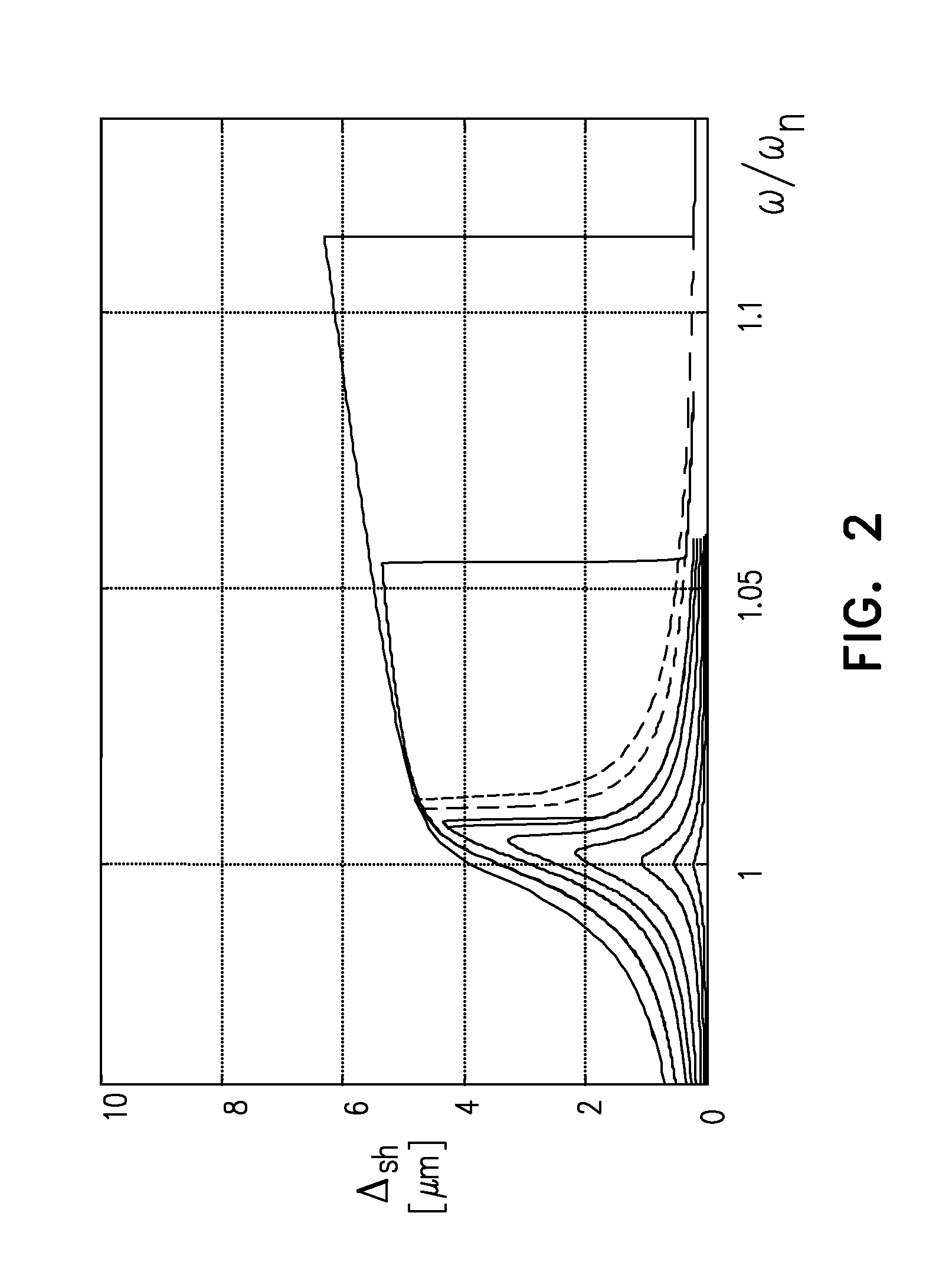Dynamically-balanced folded-beam suspensions
- Summary
- Abstract
- Description
- Claims
- Application Information
AI Technical Summary
Benefits of technology
Problems solved by technology
Method used
Image
Examples
examples
[0119]In order to verify the above mathematical calculations, test devices were fabricated using the SOIMUMPs technology described at the beginning of this disclosure. The test devices were electrostatic comb-drive resonators suspended on folded-beam suspensions. The devices were fabricated in a (100) single crystalline silicon layer, with flexure beams oriented in the (110) direction. Two types of test devices were fabricated: one device with a standard prior art folded-beam suspension with beams of equal length, and the other with a dynamically-balanced suspension of the present application, with a shortened anchored beam. The devices were designed with an arbitrary mass ratio of msh=mfb.
[0120]The flexure beams were designed to be h=3 μm wide, 1=25μm thick, and L2=600 μm long, except for the shorter beam in the dynamically-balanced suspension. For these devices the shorter beam is designed to be L1=497 μm long. This length was determined by solving equations (35) and (36), with th...
PUM
 Login to View More
Login to View More Abstract
Description
Claims
Application Information
 Login to View More
Login to View More - R&D
- Intellectual Property
- Life Sciences
- Materials
- Tech Scout
- Unparalleled Data Quality
- Higher Quality Content
- 60% Fewer Hallucinations
Browse by: Latest US Patents, China's latest patents, Technical Efficacy Thesaurus, Application Domain, Technology Topic, Popular Technical Reports.
© 2025 PatSnap. All rights reserved.Legal|Privacy policy|Modern Slavery Act Transparency Statement|Sitemap|About US| Contact US: help@patsnap.com



